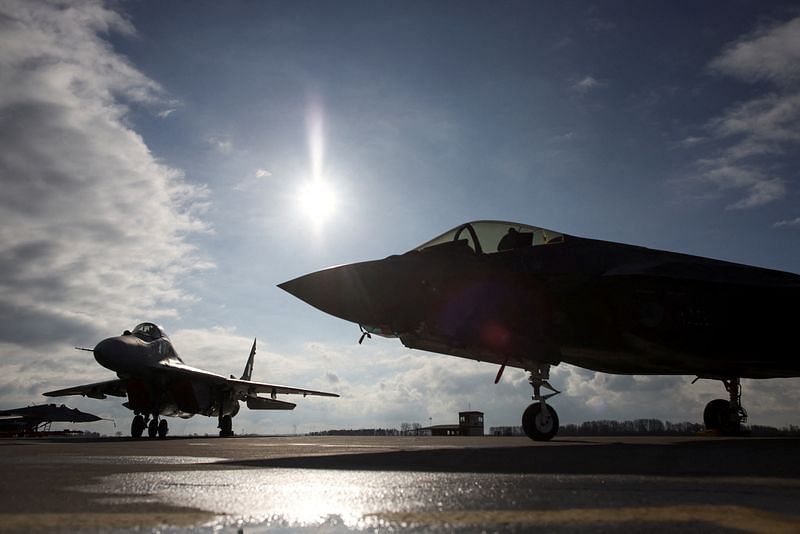The Russia-Ukraine war, which started on 24 February 2022, has affected the entire world in some way or the other. The affected domains include security – especially for countries dependent on Russian defence equipment – energy supply, grain supply and economic escalation of costs. Moreover, a nuclear escalation is still a possibility, howsoever distinct.
The core Russian demand was Ukraine not joining North Atlantic Treaty Organization (NATO) and a pledge by NATO to prevent its further Eastward expansion. It was a fair expectation in view of Russia’s security concerns. These demands were not met as Ukraine was made to play in the hands of the US and other NATO countries to checkmate Russia, a situation that continues to date. Huge losses have been suffered by Ukraine and there are no signs of this conflict ending anytime soon. Though Russia has also suffered substantially, Russian losses are not the gains of Ukrainians.
It is, therefore, important that this conflict is resolved not only for the benefit of Russia and Ukraine but for the larger good of the entire world.
China has embarked on ‘no limits’ friendship with Russia since Beijing Olympics 2022. It is beside the point that China has been supporting Russia openly less due to concerns for Russian well-being and more due to its animosity with the US. China proposed a 12-point proposal on 24 February 2023 to resolve the Russia-Ukraine conflict. The proposal was followed by President Xi Jinping’s visit to Russia from 20-22 March. While the proposal received a positive response from the Russian side, it didn’t ring positive bells on the Ukrainian side.
The 12-point proposal from China included respecting the sovereignty of all countries, abandoning the Cold War mentality, ceasing hostilities, resuming peace talks, resolving humanitarian crisis, protecting civilians and prisoners of war (POWs), keeping nuclear power plants safe, reducing strategic risks, facilitating grain exports, stopping unilateral sanctions, keeping industrial supply & chains stable, and promoting post-conflict reconstruction. The proposal was primarily a broad framework based on which dialogues were supposed to be initiated to find a common ground for the conflict resolution.
Any discussed conflict resolution is successful only when both the parties to the conflict get an honourable exit, which is a tough call between Russia and Ukraine due to the following reasons:
- Crimea, the erstwhile part of Ukraine, was annexed by Russia in 2014.
- Four Ukrainian oblasts – Luhansk, Donetsk, Zaporizhzhia, and Kherason – have been annexed by Russia since 30 September 2022. These constitute close to 15 percent of Ukrainian territory – about 20 percent if you include Crimea.
- There has been major devastation in Ukrainian cities and towns besides losses of soldiers and war-waging equipment. Russia has also suffered substantial losses of soldiers and equipment but has escaped any infrastructure damage.
- The support of US and NATO countries is increasing and Ukraine has gained some success through its counter-offensives against Russian progress and is hopeful of continuing progress in days to come. It has become more defiant to negotiations.
Also read: China hasn’t restored pre-April 2020 status quo. New Delhi’s muted response is also to blame
Way to end the conflict
The deadlock can be resolved based on the Indian approach to conflict resolution with China, even though it is yet to succeed in the Indian context. The Indian approach is simple and logical wherein it is not demanding anything new from China but is willing to maintain peace and tranquillity on the borders if China reverts to pre-conflict positions as existed in April 2020. It is to be noted that India and China have a complex border issue. China has occupied Aksai Chin and the LAC is notional – neither delineated nor demarcated – due to differing perceptions at several locations. Mutual relations still flourished until China changed the status quo in April 2020. The relations will normalise if China reverts to April 2020 locations.
The Indian argument with China can be extrapolated to resolve the Russia-Ukraine conflict. The proposal could include immediate ceasefire to hostilities, and political dialogue on the following lines:
- Both Russia and Ukraine revert to positions as existed prior to the launch of special military operations by Russia.
- Issue of Crimea be dropped from the current discussion, though it could be part of the dialogue process later.
- Due to the Minsk Agreement in 2014 and thereafter in 2015, two regions of Ukraine – Luhansk and Donetsk – were reasonably free and therefore these four oblasts of Ukraine could be granted independence both outside Russian and Ukrainian control. These could also be given substantial autonomy and maybe retained within the Ukrainian federal structure depending on what is acceptable to both Russia and Ukraine. Threadbare discussions could find a granular solution.
- Russia assumes the responsibility of reconstruction of Ukraine to pre-conflict levels. International organisations and other countries may also chip in.
- All sanctions against Russia be withdrawn.
- Ukraine does not join NATO and further Eastward expansion of NATO is prevented.
It is hoped that these four oblasts being granted liberal autonomy but staying within Ukraine together with Ukraine not joining NATO will give an honourable exit to both Ukraine as well as Russia. Fine-tuning can be done with mutual discussions. There is a golden opportunity for Indian Prime Minister Narendra Modi to travel to Russia and Ukraine with such a proposal, which could include reverting to pre-1 January 2022 positions held by both sides. It will also give more legitimacy to our stance toward China, putting pressure on Beijing to resolve the LAC issue.
Maj Gen Ashok Kumar, VSM (Retd) is a Kargil war veteran and defence analyst. He tweets @chanakyaoracle. Views are personal.
(Edited by Prashant)
